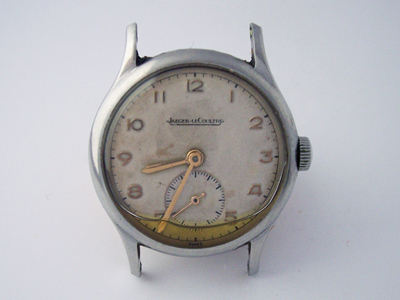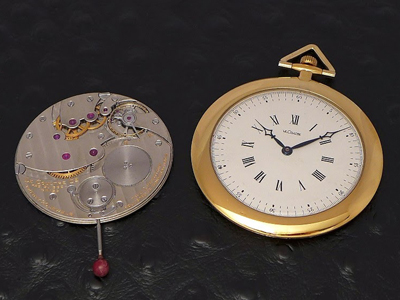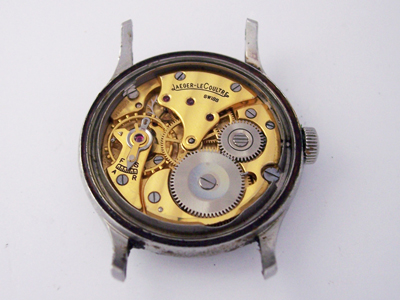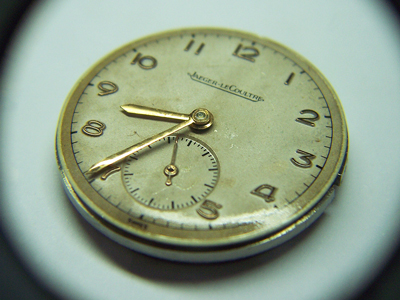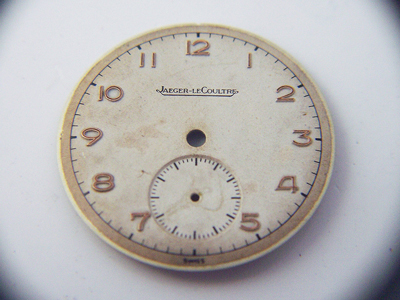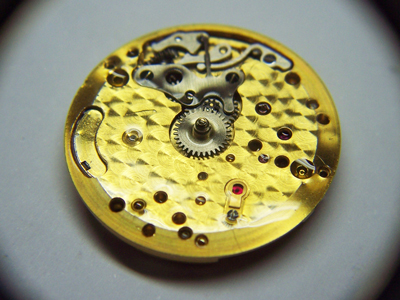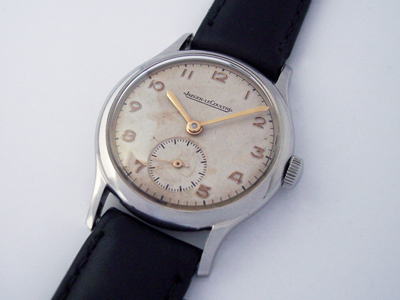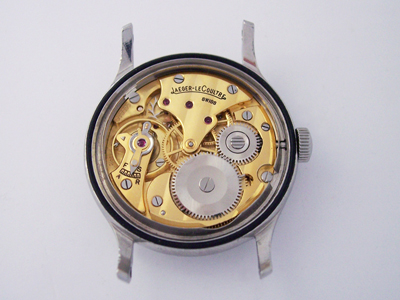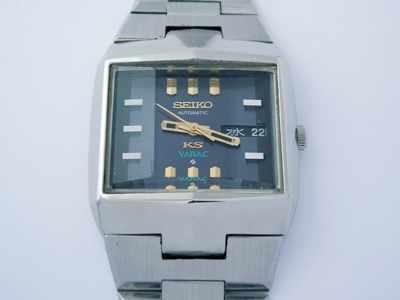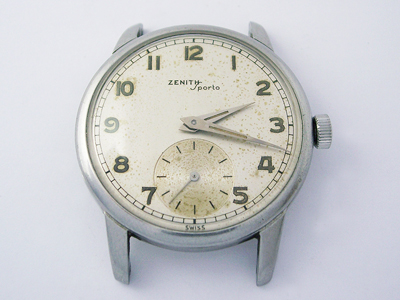Rather unconventional I know, but let’s start the new decade off with a cry for help…. No, not from me, from this poor Jaeger-LeCoultre. Yes folks, that is indeed oil and plenty of it!
(Click pictures to enlarge)
Founded in 1833 on the border of the Swiss Jura mountains, Jaeger-LeCoultre is one of the most famous watch brands in the world. Founded by Antoine LeCoultre and later joined by his son, Elie, LeCoultre & Cie was the first fully fledged watch manufacturer, housing all the skills required to create watches under one roof.
By 1870 the company employed 500 people, was recognised as the “Grand Maison” in the Vallée de Joux and had already developed partially mechanised production methods for their more complicated calibres.
In 1903, Edmond Jaeger, a Parisian watchmaker, collaborated with LeCoultre to develop and produce the ultra-thin calibres that he had invented, resulting in the world’s thinnest pocket watch calibre, the Cal. 145, measuring just 1.38mm thick.
Subsequent deals to supply calibres for Cartier watches and the production of the famed Atmos clock lead to the two companies merging in 1937 to become the Jaeger-LeCoultre brand we know today.
Jaeger-LeCoultre have now developed well over 1000 in-house calibres and have created some of the industry’s most recognisable models including the Reverso, Futurematic, Memovox and the Joaillerie 101 which is powered by the world’s smallest mechanical calibre, the Cal. 101, weighing just 1 gram. Ultra-thin calibres continued to be a speciality for Jaeger-LeCoultre, several examples of which can be seen here.
Ok, back to the ‘patient’. I’ll say right away that the current owner wasn’t responsible for the oil slick, he bought the watch as a non-runner and asked if I could help.
Though I have worked on several Jaeger-LeCoultre watches over the years, generally speaking, I’m reluctant to get involved with them as parts can be difficult to source. Also, in most cases where oil has made its way onto the dial, the print and minute track generally just lifts off the surface at the slightest touch and the dial is ruined.
With the owner well aware of the risks and the potential parts situation, we agreed to proceed on a “nothing ventured, nothing gained” basis.
On opening the watch, the oil situation didn’t improve much but at least the movement was complete and in reasonable condition. Inside is a JLC Cal. 480/C; a nicely engraved and decorated 17 jewel manual calibre with a beat rate of 18,000 bph, dating I’d say to the 1950’s or early 60’s.
However, what I wasn’t prepared for was the smell. Having oiled furniture in the past, the smell was unmistakable… Linseed Oil! So, whoever did this must have thought a liberal pouring of linseed oil onto the train wheels might improve things, but I’m guessing they were pretty quickly disappointed and into a drawer it went for the next few decades.
Out of the case the dial and hands were completely coated resulting in a sheen across them under the watchmakers lamp.
It’s not generally a good idea to submerge a watch dial in any kind of cleaning solution, well not in my opinion anyway, so the oil was removed from the dial by dabbing it carefully with Rodico cleaning compound. A time consuming process as the Rodico pieces were very quickly saturated with oil and needed to be discarded, resulting in quite a pile of them in the end.
Thankfully, the dial print and minute track remained intact, but the oil had definitely left stains across the surface of the dial. In the sub-dial you can almost make out the outline of the sub-second hand where the oil had been pooled under it for many years.
I’m sure some people will be thinking at this point, “I couldn’t wear a watch looking like that, why not just send the dial out for refinishing?” Which is a valid question, but that would have robbed the watch of its originality and the the life it’s had, linseed oiling and all. You can make your own minds up on that one.
With the dial successfully cleaned, it was on to tackling the movement. Here’s a picture of the dial side of the movement which is not nearly as pretty as it should be.
With this much oil there is no way that a regular cleaning cycle would have removed it all, so during the disassembly, each item had to be individually cleaned by hand before being placed into the parts basket. The movement was then put through a full cleaning cycle after which the fluids in the machine were all discarded and refreshed ready for the next job.
With the parts finally cleaned, the rest of the service was straight forward and once rebuilt the movement started right up and showed no signs of any detrimental effect. The case was given several laps in the ultrasonic tank, a new acrylic crystal fitted as the old one had yellowed and the final job was to fit a new caseback gasket.
Here’s the watch all cleaned up and ready to be put back into service. A messy job but well worth the effort, I hope you agree.
Rich.

